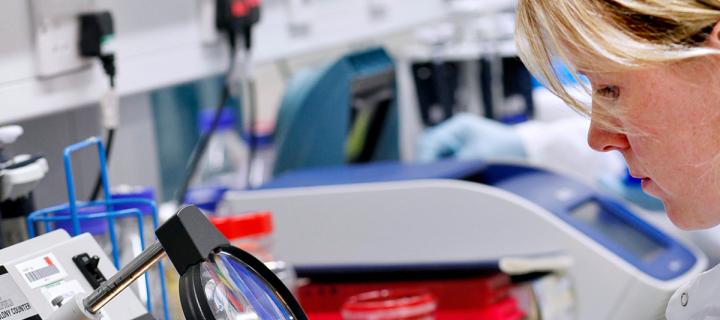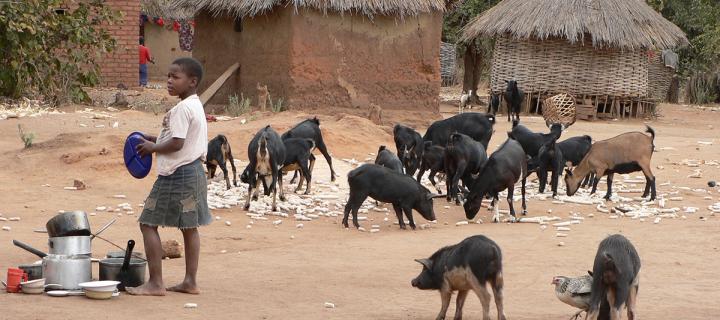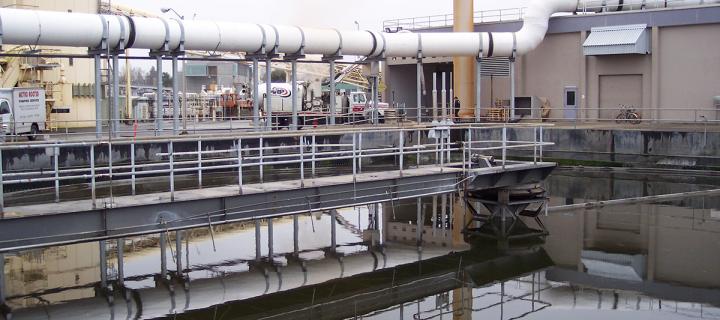Global and local epidemiology of antimicrobial resistance
The study of the dynamics and spread of AMR at the veterinary-human interface (One Health).

Summary
Theme leader – Professor Mark Woolhouse
Professor Mark Woolhouse
Edinburgh Infectious Diseases AMR Champion and Professor of Infectious Disease Epidemiology
- Centre for Immunity, Infection & Evolution and Usher Institute of Population Health Sciences and Informatics
- Colleges of Science & Engineering and Medicine & Veterinary Medicine
Contact details
- Email: mark.woolhouse.ed.ac.uk
The University of Edinburgh has a strong track record in the general area of the epidemiology of infectious disease, particularly in the Centre for Immunity, Infection and Evolution, and The Roslin Institute. Allied to core strengths in computational biology, collaborative links with SRUC and potential synergy between veterinary and medical schools, make this area a significant strength with potential for further consolidation and enhancement.
Recent grant successes in this area include funding from NERC and UK-China Newton fund. Multiple grant applications from Edinburgh investigators are currently under consideration with the Joint Programming Initiative on Antimicrobial resistance (JPIAMR; Horizon2020).
Examples of projects in this theme
Transfer of antimicrobial resistance genes between pigs and human
Project leaders: Adrian Muwonge, Roslin Institute; Alexander Corbishley, Roslin Institute
AMR is a global public health threat which increases the mortality and morbidity of common diseases. It not only diminishes the therapeutic value of drugs but also drives the costs of health care beyond the reach of millions of people globally. The irrational use of antimicrobials in our livestock is creating an additional source of resistance for the human population. In this regard, defining the fundamentals behind AMR gene generation, sharing within the gut microbiota and ultimately their exchange at the human-animal interface offers the best chance of developing effective and sustainable control measures globally.
Adrian’s project is based in a setting of epidemiological relevance and exploits our current advancements in molecular techniques as well as efficiency in data processing. The work profiles and dissects antibiotic driven changes in the gut microbiome of humans in contact with pigs in Uganda. Furthermore, it makes predictions on AMR gene exchange potential by defining the occupational risk.
Alexander's work centres on the use of antibiotics in the UK pig farming industry. Approximately 420 tonnes of antobiotics are used in animals in the UK each year, with poultry and pig farming represent a significant proportion of this use. Whilst the use of antibiotics as growth promoters is banned in the EU, they are still used for group level treatments of farm animals. Our understanding as to how antibiotic use in farm animals relates to the levels of antibiotic resistance genes within different farming systems is very simplistic, and there is no clear evidence base to infrom the most effective way to reduce and refine antibiotic use on farms.
The aim of the project is to demonstrate that the diversity of bacteria and 'quantity' of antimicrobial resistance genes within pig faeces and their environment firstly can be measured, and secondly can be related to antibiotic use and management practices on the farm. With this evidence it will be possible to develop a framework in which changes can be proposed to both management practices and antibiotic use on farms, which minimise the selection for antibiotic resistance.

Metagenomics of sewage at local and global scales
Project leaders: Meghan Perry and Bram van Buunik, School of Biological Sciences
The microbial communities in sewage are an important reservoir of AMR as they contain pathogenic organisms, human commensal organisms and resistance-carrying environmental organisms.
Metagenomic sequencing of human sewage and quantification of antimicrobial resistance genes and residues combined with epidemiological data is a possible way to determine the occurrence and burden of resistance in defined healthy human populations. Recent developments in high‐throughput sequencing offer the ability to rapidly identify nucleic acids from various organisms in clinical and environmental samples. Sewage systems are recognized as an important source of human pathogens, especially in crowded settings with poor infrastructure.
By directly analysing the resistome of hospital sewage using metagenomics and correlating it with whole genome sequencing of inpatient clinical isolates we hope to provide information on the cycle of antimicrobial resistance between patients and the environment and establish if hospital effluent analysis could be a useful antimicrobial surveillance tool.
These projects are providing proof‐of‐concepts for applying metagenomic approaches, which could initiate a global surveillance of human infectious diseases including antimicrobial resistance from sewage collected in major cities around the world to detect, control, prevent and predict human infectious diseases.
More information can be found at the project website:
http://www.compare-europe.eu/Library/Global-Sewage-Surveillance-Project

Emergence and global spread of community-associated Methicillin-resistant Staphylococcus aureus
Project leader: Ross Fitzgerald, Roslin Institute
A major interest in the Fitzgerald group is understanding the origin, evolution, and spread of new pathogenic bacterial clones causing disease in humans and animals. In collaboration with Mark Woolhouse and Melissa Ward, we have traced the emergence and dissemination of the major community-associated clone of Methicillin-resistant Staphylococcus aureus (MRSA) in East Asia (ST59).
There are 2 major subtypes of ST59, one prevalent in the USA and one dominant in East Asia and, contrary to previous suggestions, this study did not find evidence for the Taiwan ST59 clone having emerged from the USA. Our quantitative analysis of the global circulation of ST59 identified East Asia and the USA as separate source populations and Europe and Australia as sink populations, revealing pathways for the global spread and frequent intercontinental transmission of ST59 CA-MRSA.
Of note, the lack of direct exchange of ST59 strains between the USA and Taiwan is striking and may in part reflect their remarkably different profiles of mobile genetic elements. In particular, ST59 strains from Taiwan possess a much larger number of antibiotic resistance genes than the USA strains, an observation that is consistent with distinct cultures of antibiotic usage in the different regions.
Taken together, these findings highlight the critical requirement for a global strategy to control the emergence and dissemination of antibiotic-resistant clones.



